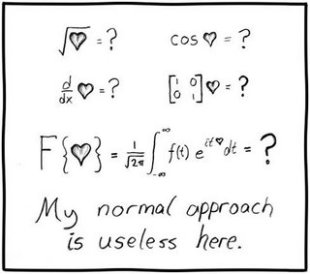The Drake Equation, as we’ve discussed in class in the most recent unit, is a formula intended to project an estimate of how many intelligent societies could exist in the universe. The formula multiplies a series of interdependent variables–the rate of formation of Sun-like stars, the number of planets in a habitable zone per solar system, etc.–to get a probabilistic grasp on whether there’s life out there, and if so, whether it is organized in communicable civilizations.
Seems like the underlying idea is pretty adaptable to whatever your situation, though. While doing some background reading, I found a brief essay by Peter Backus, a British Ph.D. student of economics, that took the Drake equation in a totally new direction. Mr. Backus’s question: how likely am I to get a girlfriend?
Backus presents the original Drake equation before toggling the variables to fit his needs. Once he establishes his base values–the population growth rate and the percentage of that population that is female–he adjusts the subsequent variables for age, attractiveness, education level, and more. He also takes into account his own age, perhaps analogous to the section of the Drake equation that measures the longevity of a communicable society…? Either way, it boosted his chances.
When it’s all said and done, Backus predicts that there are a little over 10,000 ladies in the UK who fit his criteria for girlfriend potential. That’s on par with a few of the Drake equation estimates that we did in class, though just like the real equation, I feel like there’s a huge margin of error. What if all those girls–just like all those other communicable civilizations out there–don’t know that he exists?



